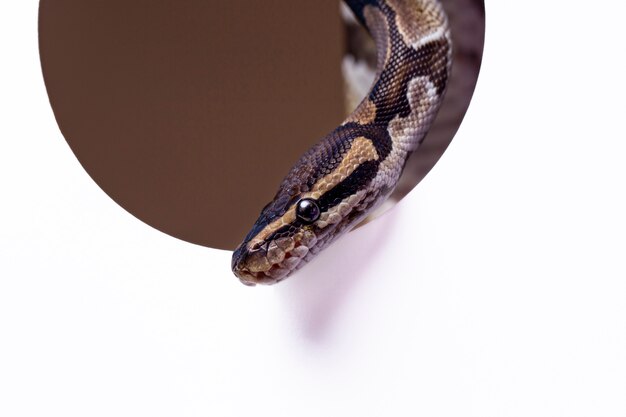Interesting Snake Facts

Snakes are incredible creatures with fascinating biology.
Did you know that snakes have been on Earth for over 100 million years?
There are more than 3,500 species of snakes worldwide.
Some snakes can lay up to 100 eggs at a time.
Snakes use their tongues to smell their surroundings.
Snakes have unique scale patterns that can help identify their species.
A snake’s skin is actually transparent, covered by scales that give it color.
Snakes can swallow prey much larger than their own head.
Snakes have a unique ability to dislocate their jaw bones for successful swallowing.
Snake venom is used for medical purposes, such as pain relief and treating diseases.
Not all snakes are venomous; some use constriction to catch their prey.
Some snake species can fly through the air, such as the Paradise Tree Snake.
Snakes can be found in almost every habitat on Earth, from deserts to rainforests.
The world’s longest snake is the reticulated python, reaching over 30 feet in length.
Snakes shed their skin several times a year, allowing for growth and repairs.
Snake fossils have been found dating back to the dinosaur age.
Cobras are known for their iconic hood, which they use to intimidate predators.
Not all snakes are long and slim; some species, like the Gaboon viper, have a triangular shape.
The green anaconda is the world’s heaviest snake, weighing over 500 pounds.
Interesting Snake Facts part 2
Snakes can sense heat through special organs called pit organs.
Some snakes, like the rattlesnake, use their tails to produce a warning sound.
The king cobra is the largest venomous snake on Earth, capable of reaching over 18 feet in length.
Snakes don’t have eyelids but instead have a transparent scale called the spectacle.
Snake fossils have been found in Antarctica, suggesting they once lived in colder regions.
The black mamba is one of the fastest snakes, capable of reaching speeds up to 12 miles per hour.
Snakes have a unique way of drinking water by tilting their head back and letting the water flow into their mouth.
Some snakes, like the hognose snake, can play dead when threatened.
Snakes can go weeks or even months without eating, depending on their size and metabolism.
The spitting cobra can accurately spray its venom up to 8 feet away.
The Brahminy blind snake is the world’s smallest snake, measuring only a few inches long.
Snakes have an incredible sense of vibration, which helps them detect prey and potential threats.
The sidewinder snake has evolved a sideways slithering motion, allowing it to move efficiently on sandy surfaces.
The scales on a snake’s belly, called ventral scales, help them grip surfaces while climbing.
Some sea snakes have adapted to live their entire lives in the ocean and can’t survive on land.
The king cobra’s venom is potent enough to kill an elephant, which makes it one of the most dangerous snakes.
Snakes don’t have external ears, but they can still sense vibrations and low-frequency sounds.
The carbon monoxide produced during snake digestion is toxic to humans if inhaled.
Some snake species have evolved to be completely immune to their own venom.
Snakes have been heavily featured in mythology and folklore across different cultures around the world.
The blood python gets its name from the deep red coloration of its scales.
Many snake species have a heat-sensing pit located between their eye and nostril.
Some snake species, like the copperhead, have heat-sensing pits located only on one side of their face.
The scales on a snake’s belly are more smooth and flat compared to the rough scales on its back.
The snake’s ability to shed its skin symbolizes transformation and rebirth in many cultures.
Snakes play a crucial role in ecosystem balance by controlling rodent populations.